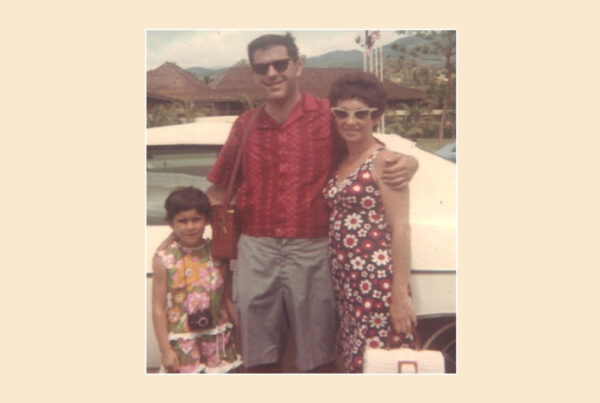Since the advent of social media, how we promote our products and services has changed dramatically. We’re in a world of “I’ll have what you’re having. If you like it, and I like you, it must be good for me.”
If you and I are virtual friends, you are 27% more likely to find credibility in a product recommended by me than from a pop-up, TV ad, billboard or centerfold.
[Tweet “If you and I are virtual friends, you are 27% more likely to find a product recommendation from me.”]
That’s why third party testimonials used during the sales process earn you more credibility than ever before. Stories resonate better with your customers. They create more of an emotional connection than pure data. One of the best salespeople I’ve ever met, Nancy C., tells third party stories seamlessly throughout her entire presentation. In fact, she’s so effective that she works six months per year and travels the world the other six months. She attributes her success to documenting, practicing and telling effective stories.
Are you using stories to your full advantage?
Many salespeople share how others have used their product, but they’re not strategizing why they’re telling the story and how it will benefit the customer and the sales process. Ask yourself these questions:
- Why am I telling this story?
- What’s the intended impact?
- Does it serve a purpose?
- Does it tie into my customer’s emotional motivator, solve a problem or overcome an objection?
- Is it structured in a way to hold the customer’s attention?
- What’s the punch line, and is that punch line crafted to create a memorable ending?
Effective stories are both authentic and compelling. Whether you’re selling solar power, copiers, software, vacations, or consulting by the hour, follow these five distinctions of a good third party story:
The story must serve a purpose
- Quite simply, ask yourself “why am I telling this story?”. What is its desired impact on my audience? A story must serve one of three purposes. It must:
Hit an emotional buying motive - Solve a customer’s potential problem
- Overcome an objection
Stories help you connect emotionally with your customer and link what’s important to them with your product: Remember, “logic causes us to think, emotions cause us to act.” Advertisers employ this masterfully.
As a salesperson, you don’t have a multi-million dollar advertising budget. You have something much more powerful. You are face to face with your customer.
The story must be based on truth
Only when you seek examples of real people, who can share real experiences, will your stories resonate as authentic. According to expert speaking coach and Stanford Lecturer, Lee Eisler, it’s important when telling a story that you relive it as you tell it. Put yourself in the moment that the event occurred. When stories are made up, passion is lacking, emotion is forced, and your connection is lost.
The story must be relevant
Don’t tell your CEO customer from New York City, that he reminds you of another client, Bernie Hansen, who’s a farmer from Nebraska. Stories only resonate with customers if they can listen and think, “me too!” I’m just like so and so, therefore, I would obviously have the same good experience.
The story should be about a third party
Obvious? Look, you’re supposed to use the product. You’re selling it. Stories are endorsements from other customers who’ve received emotional or financial value from your product.
Specificity- Have you ever noticed that the more specific a story or claim is the more credible it is?
Just as specific praise for accomplishment is more effective than generalizations, so too with stories. Attorneys, advertisers and top salespeople know that specificity engenders believability.
For example.. Generalization:
“This diet is the best in the world to help you lose weight.”
Or
“Independent laboratory tests prove that the high mineral content in Luci Systems reduces fat by 75%. The average user lost ten pounds after just 30 days.”
With the strong influence of technology today, storytelling humanizes your sales process. Make your stories credible, authentic and compelling and you’ll not only sell more, but you’ll have a better time doing it.
To learn more about the type of learning that will attract, train, and retain your future sales stars, click here for a free demo of Levitin Learning.




10:28 – Social Media can actually be a great way to create buzz for a “product no one’s ever heard of” – provided the product has some buzzworthy feature to it that gets people excited. Think of all the buzz the blogpsohere generated about the iPhone long before the first ad broke. But your instinct- that social media works well in combination with traditional media- is correct.
Thanks for the insight Johnie.